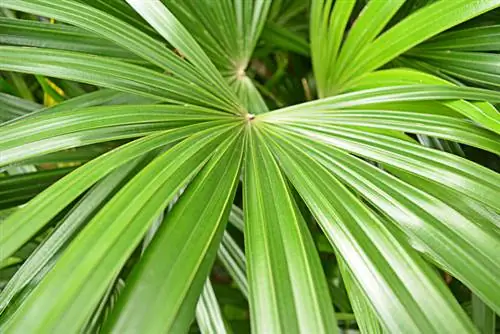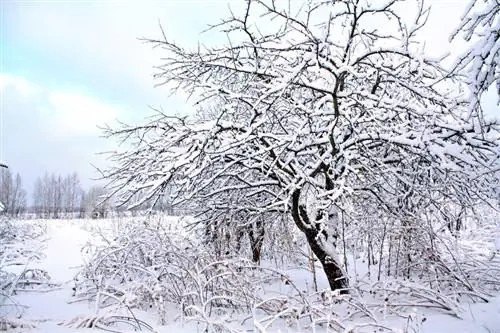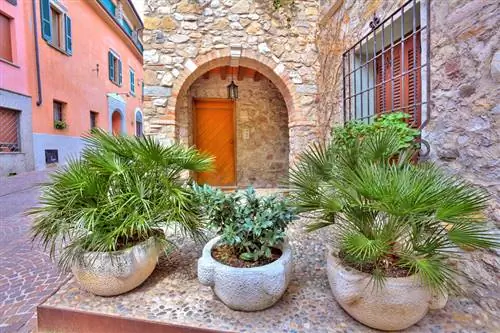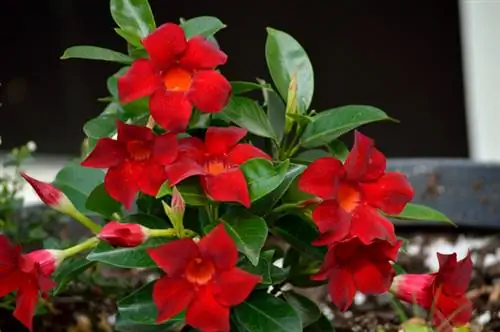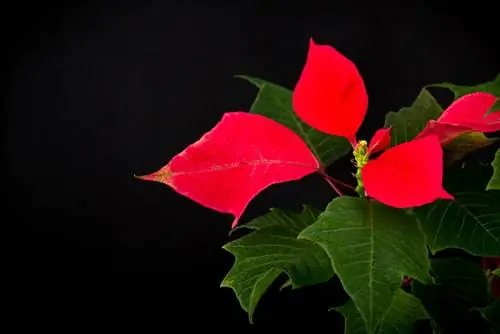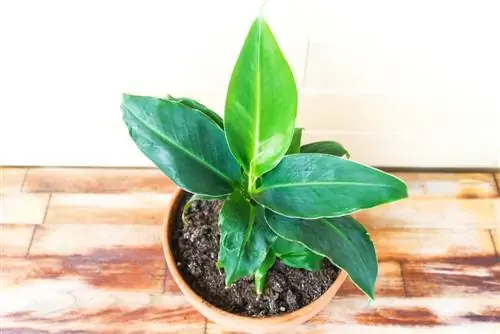- Author admin [email protected].
- Public 2023-12-16 16:46.
- Last modified 2025-01-23 11:20.
Hemp palms grow in the garden all year round in our latitudes, but can also be grown in pots as houseplants. The hemp palm does not require much care. However, you should keep a few things in mind to ensure that the palm tree grows well. How to properly care for hemp palms in your home or garden.
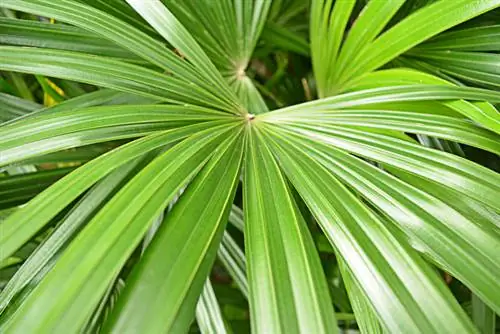
How do I properly care for a hemp palm?
Water the hemp palm regularly with low-lime water, spray it when the humidity is low, fertilize every 2-3 weeks with liquid fertilizer and remove brown leaves. Outdoors it is hardy down to -18 degrees, in the pot up to -6 degrees.
How is the hemp palm properly watered?
Hemp palms should never dry out completely, but they cannot tolerate waterlogging. Water the palm tree regularly with low-lime water. Watering is always done only when the top layer of the substrate has dried out by several centimeters. Do the thumb test.
Excess irrigation water must be poured off immediately so that the roots are not too wet.
Why should you spray indoor hemp palms more often?
The humidity in the house is often very low. The plant then develops brown leaf tips. If you lightly spray the hemp palm more often, the humidity will increase accordingly.
What causes brown leaves on hemp palms?
- Lack of light
- watered too much
- too dry
- Frost Damage
- Sunburn behind glass panes
- Nutrient deficiency (rare)
How are hemp palms properly fertilized?
Liquid fertilizer is given every two to three weeks. Apply long-term fertilizer a maximum of twice a year.
Basically, you have to make sure that you do not over-fertilize the hemp palm.
Does a hemp palm need to be cut?
Like all palm trees, hemp palms are not cut. They only have one point of vegetation and will die if you cut it. You may only cut off brown leaves.
When is it time to repot?
You only need to repot hemp palms every four to five years, as the palm does not grow that quickly.
In the open field, the hemp palm remains in the same place. Transplanting doesn't make sense because you can't get the long taproots out of the ground.
What diseases and pests can occur?
- Sootdew
- Aphids
- Red spider mites
Sooty mold is a fungal disease caused by aphids. It is noticeable through a gray coating. It does little harm to the palm tree. Growth is slightly inhibited. Simply wash off the deposits and fight the aphids.
How do you overwinter hemp palms outdoors?
Hemp palms are not planted outdoors until they are four years old at the earliest. They are hardy down to -18 degrees, but must be protected from moisture.
It makes sense to cover the leaves with burlap or garden fleece and spread a layer of mulch on the ground.
How do you overwinter hemp palms in a pot?
Hemp palms in pots can stay outside down to -6 degrees. If it gets colder, the palm tree needs to be overwintered in a cool but bright place.
If you keep a hemp palm indoors all year round, keep it cooler over the winter. Water less.
Tip
Hemp palms are propagated via seeds. However, you need a lot of patience to grow new hemp palms. It takes years to grow into a robust plant.

